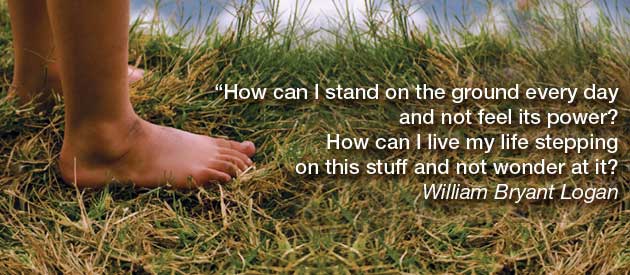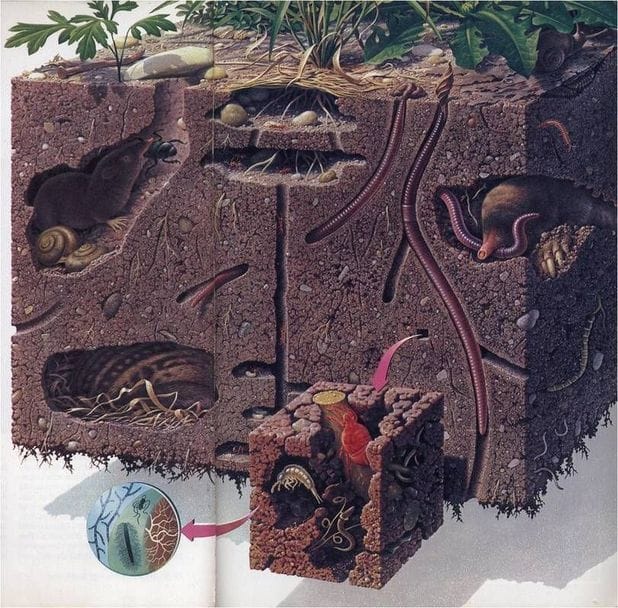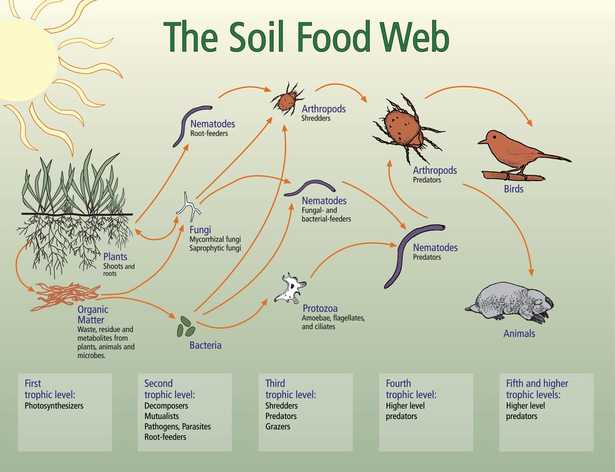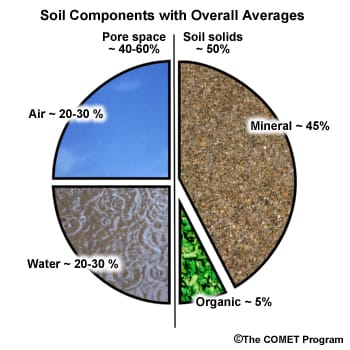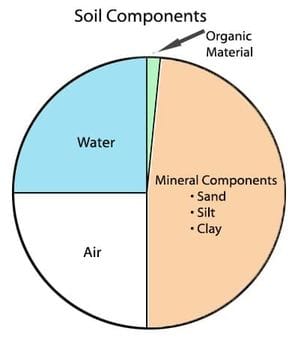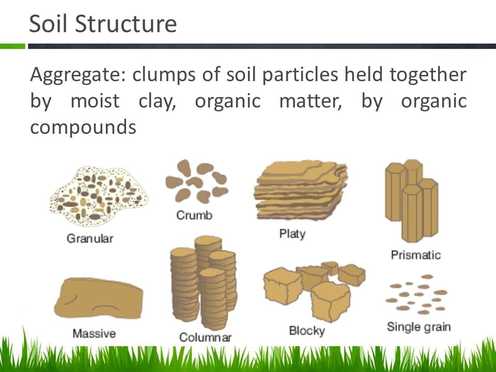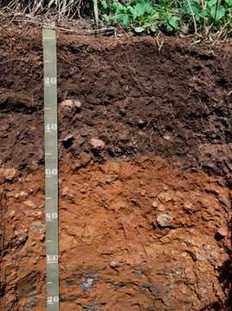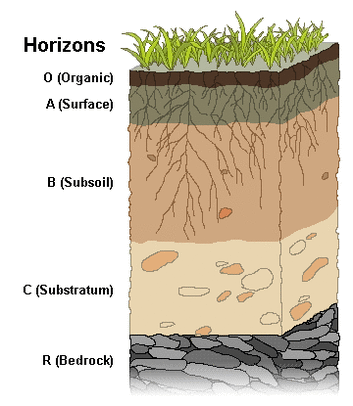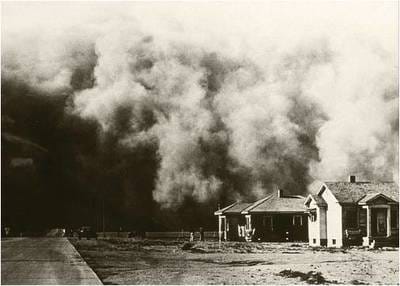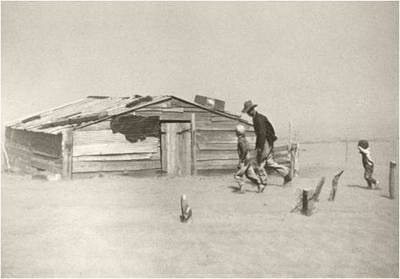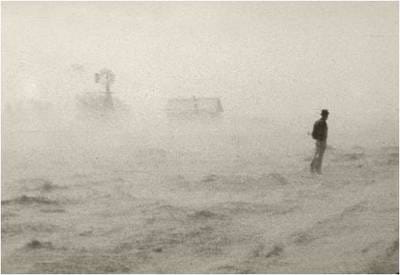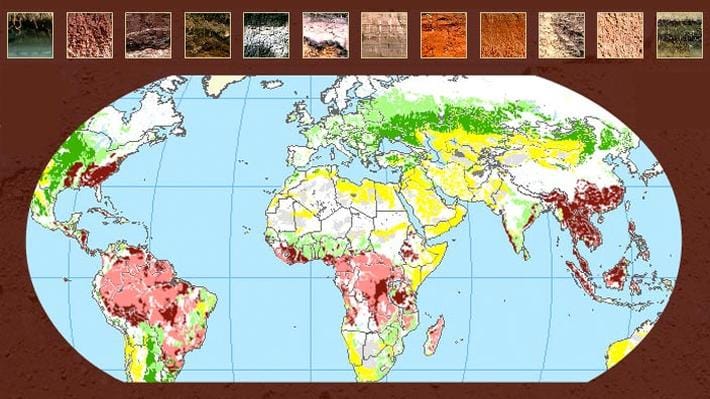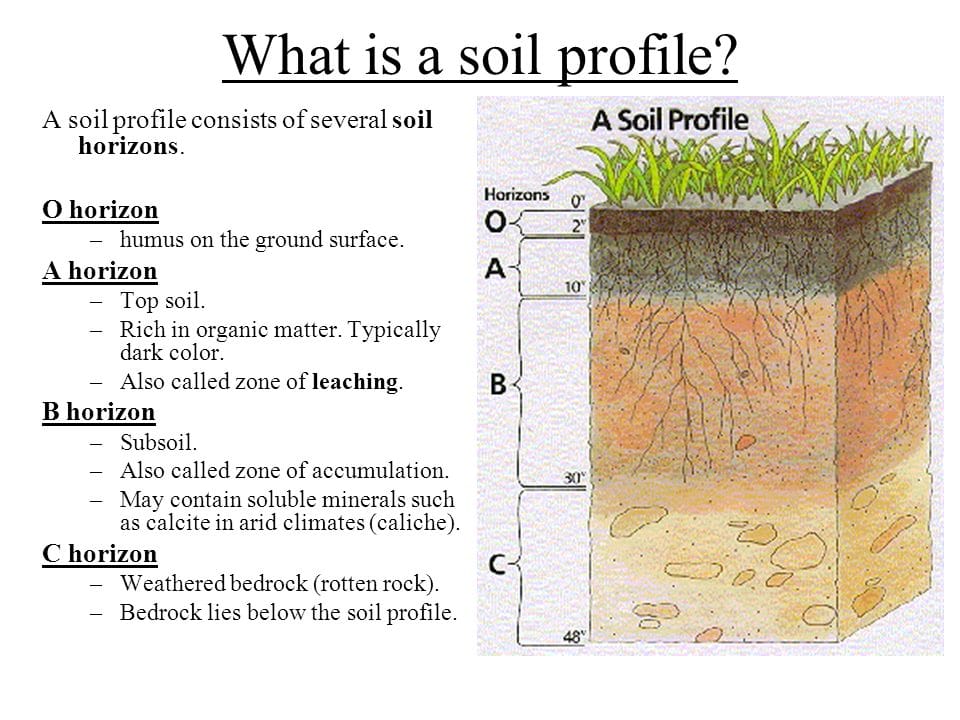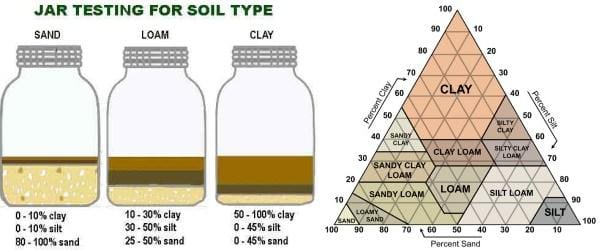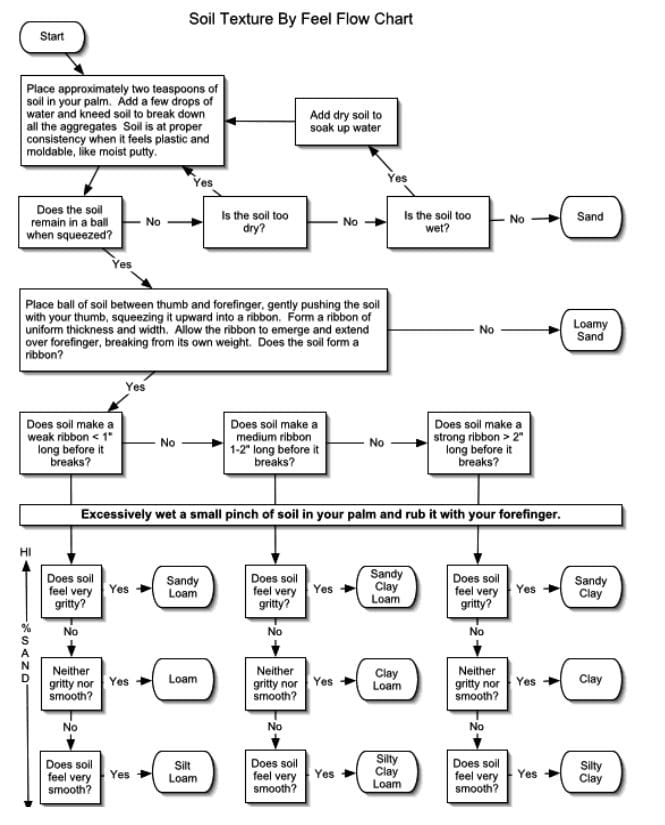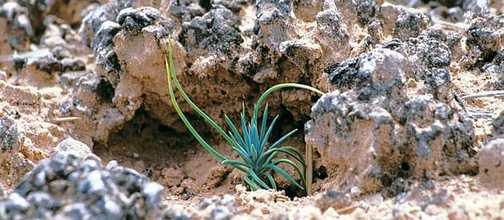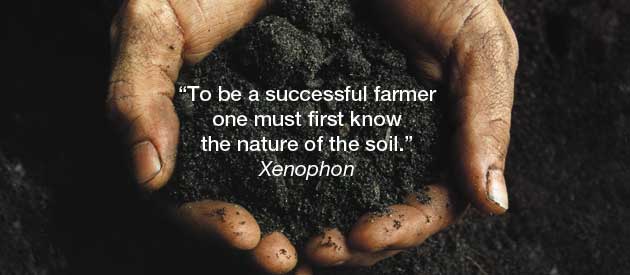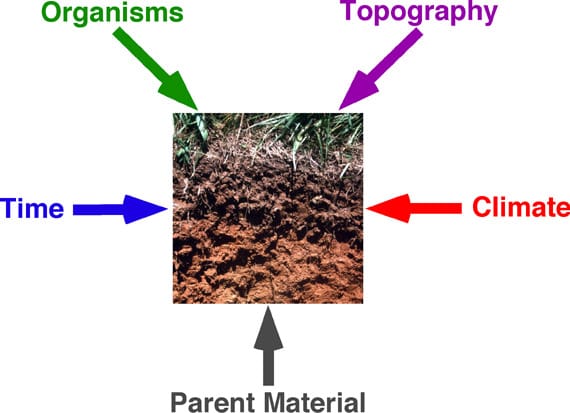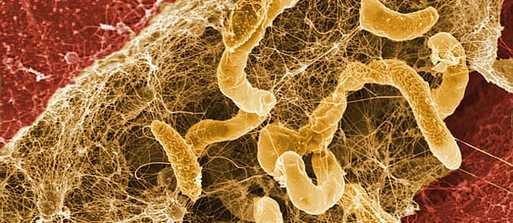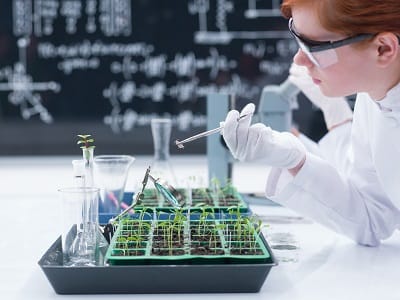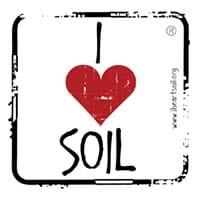|
Things that we depend on and need most for daily living includes food, clothing, shelter, water, and air. Consider how each of these needs depend on soil... Without soil, there would be no life! One teaspoon of soil can hold between 100 million and 1 billion bacteria and other organisms. Looking at the bigger picture, energy is seen as critical, with sunlight as the ultimate source of energy. Food, fiber (clothing), water, air and shelter – are all related to a single but often overlooked item: Soil. What is Soil? There are many soil properties that help us describe and manage soils. Some of the important physical properties are described below. Soil Composition: There are Three Phases of Soil: SOLIDS, LIQUIDS, AND GASSES. Soil composition is important for nutrient management. While minerals and organic matter hold and store nutrients in the soil, water readily provides nutrients for plant uptake. Air in the soil plays another integral role; the numerous microorganisms that live in the soil need air to undergo biological processes that release additional nutrients into the soil. The basic components of soils are minerals, organic matter, water and air. The typical soil consists of approximately 45% mineral, 5% organic matter, 20-30% water, and 20-30% air. Water and air occupy pore spaces in various proportions. The proportion of air and water varies from one season to another. At optimum moisture for plant growth, 50% of the pore space possessed is divided roughly in half - 25% of water space and 25% of air space. Thus, soil may be described as a three phase system: solid, liquid and gaseous phase. The solid phase of soil, including minerals and organic matter, are generally stable in nature. If organic matter is not properly managed, valuable organic matter may be depleted or lost from the soil. The liquid and gas phases of the soil, consisting of water and air respectively, are often considered the most dynamic properties of the soil. The relative amounts of water and air in the soil are constantly changing as per wet or dry conditions. Sources: http://www.ctahr.hawaii.edu/mauisoil/a_comp.aspx agriinfo.in/?page=topic&superid=1&topicid=367 Soil Texture: The particles that make up soil are categorized into three groups by size – sand, silt, and clay. Sand particles are the largest and clay particles are the smallest of this division. Most soils are a combination of the three. The relative percentages of sand, silt, and clay are what give soil its texture. A clay loam texture soil, for example, has nearly equal parts of sand, slit, and clay. Sand – 2.0 to 0.05 mm Silt – 0.05 to 0.002 mm Clay – less than 0.002 mm There are 12 soil textural classes represented on the soil texture triangle below. This triangle is used so that terms like “clay” or “loam” always have the same meaning. Each texture corresponds to specific percentages of sand, silt, or clay. Knowing the texture helps us manage the soil. Soil Texture Triangle Estimating Soil Texture by Feel: http://doctordirt.org/files/dr-dirt/texture-feel.pdf Soil Structure: Soil structure is the arrangement of soil particles into small clumps, called peds or aggregates. Soil particles (sand, silt, clay and even organic matter) bind together to form peds. Depending on the composition and on the conditions in which the peds formed (getting wet and drying out, or freezing and thawing, foot traffic, farming, etc.), the ped has a specific shape. They could be granular (like gardening soil), blocky, columnar, platy, massive (like modeling clay) or single-grained (like beach sand). Structure correlates to the pore space (aeration) in the soil which influences root growth and air and water movement. Soil Color: Soil color is influenced primarily by soil mineralogy – what is in a specific soil or the chemical composition. Soils high in iron are deep orange-brown to yellowish-brown. Soils that are high in organic matter are dark brown or black. Color can also tell us how a soil “behaves” – a soil that drains well is brightly colored and soil that is often wet and soggy will have a mottled pattern of grays, reds, and yellows. Dr. Dirt K-12 Teaching Resources: doctordirt.org/ Soil for Kids: soils4kids.org/ 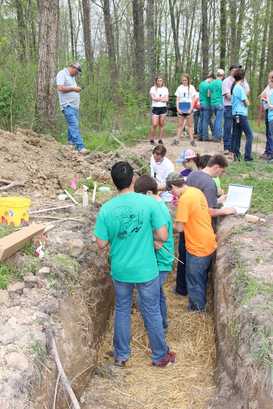 Soil Profile: There are different types of soil, each with its own set of characteristics. Dig down deep into any soil, and you’ll see that it is made of layers, or horizons (O, A, E, B, C, R). Put the horizons together, and they form a soil profile. Like a biography, each profile tells a story about the life of a soil. Most soils have three major horizons (A, B, C) and some have an organic horizon (O). The Horizons are:  O – (humus or organic) Mostly organic matter such as decomposing leaves. The O horizon is thin or thick in some soils, yet not present at all in others. A - (topsoil) Mostly minerals from parent material with organic matter incorporated. A valuable material for plants and other organisms to live. E – (eluviated) Leached of clay, minerals, and organic matter, leaving a concentration of sand and silt particles of quartz or other resistant materials – missing in some soils but often found in older soils and forest soils. B – (subsoil) Rich in minerals that leached (moved down) from the A or E horizons and accumulated here. C – (parent material) The deposit at Earth’s surface from which the soil developed. R – (bedrock) A mass of rock such as granite, basalt, quartzite, limestone or sandstone that forms the parent material for some soils – if the bedrock is close enough to the surface to weather. This is not soil and is located under the C horizon. “Be it deep or shallow, red or black, sand or clay, the soil is the link between the rock core of the earth and the living things on its surface. It is the foothold for the plants we grow. Therein lies the main reason for our interest in soils.” - Roy W. Simonson, USDA Yearbook of Agriculture, 1957 Soil Degradation: Soil degradation is a human-induced or natural process which impairs the capacity of soil to function. In 3000 BC for example, the Sumerians built large cities in the deserts of Southern Mesopotamia. Using irrigation, they farmed the desert soils and created large food surpluses thus making their civilization possible. However around 2200 BC, their civilization collapsed. Scientists still debate why; one reason may be tied to the soil. Irrigating in dry climates can cause a buildup of salt, a process called salinization. Few crops can tolerate salt. The soil in this region still remains too salty to grow crops. Other activities that degrade the soil include contamination, desertification, and erosion. Soil is Inter-Disciplinary: Soil has been a defining component of cultures since the beginning of civilization. Some of the first written words were recorded on clay tablets and water was carried in clay pitchers.
Classification of Soils: The system is called Soil Taxonomy •The highest level is the soil order (12 - USDA Soil Taxonomy) •The lowest level is the soil series (often a place name) Soils influence the worldwide distribution of plants, animals, and people. Soil Regions of Ohio - USDA/NRCS: www.nrcs.usda.gov/wps/portal/nrcs/main/oh/soils/ The Ancient Rule -“Whatever is affixed to the soil belongs to the soil” - (Anglo-Saxon Law) Soil Experiments and Hands-On Inquiry: www.soils4kids.org/experiments Get to Know Your Soil Examine Your Soil Profile: Understanding your soil profile will tell you much about how well your soil will drain and how deep your plant roots will be able to penetrate . As the diagram shows below, plant roots will be found mostly in the topsoil and subsoil. The deeper the topsoil and subsoil, the better your plants will be able to perform. Testing Soil pH: The pH of your soil will affect how well some plants can perform compared to others, as different plants are adapted to different soil pH. Soil pH is a measure of the acidity and alkalinity. pH levels range from 0 to 14, with 7 being neutral, below 7 acidic and above 7 alkaline. Soils usually range from 4 to 10. The pH is one of the most important properties involved in plant growth, as well as understanding how rapidly reactions occur in the soil. .For example, the element iron becomes less available to plant roots at higher pH levels. This creates iron deficiency problems. Soil pH can be adjusted to suit the needs of the plants that you wish to grow. Crops usually prefer values between 5.5-8, but the value depends on the crop. The pH of soil comes from the parent material during soil formation, but humans can add things to soils to change them to better suit plant growth. Soil pH also affects organisms. Soil testing kits and equipment can be purchased through catalogs and from local garden centers; however, their overall quality and dependability is strongly associated with, "you get what you pay for". Even a one degree difference in pH is an exponential amount. Given the expenses that can be incurred by making a fertilizer application error (e.g. too much or not enough), the expense of using a reputable soil testing lab is usually justified. Contact Warren SWCD for a formal laboratory Soil Testing Kit: www.warrenswcd.com/ Once you get to know your soil better and know it's pH, you can begin to improve your soil organically. If your soil is alkaline (pH 9+), additions of organic matter such as compost, worm castings, manure, etc. will help make the soil more acidic. Organic matter in the soil will help to attract and increase soil life which in turn will help break down insoluble organic particles into soluble plant food. Healthy soils will be full of life that in turn helps improve your soils. All life needs to feed and organic matter in the soil is what soil organisms feed upon. Continued applications of chemical fertilizers and pesticides can severely impact the soil life and soil condition. Some soil may be considered too shallow, sandy, compacted...beyond repair. Raised beds and no-dig gardening can be further explored to grow food in varied conditions. Good healthy soil inhibits the growth of healthy plants that are less prone to diseases and insect attacks. Using organic methods to manage your soil will naturally improve productivity. The Jar Soil Test: Identify Your Soil Type
Read the Results of your Jar Soil Test
There are three soil components – Clay, Sand, and Silt Sand makes up the largest particles in soil structure. These are rounded, rather than flat and allows for larger space between the particles. Water drains quickly from the soil that has a lot of sand and the nutrients drain faster too. If your soil is mostly sand, the plants will need more water and fertilizer. Silt represents the middle size pieces. It is made up of rock and mineral particles that are larger than clay but smaller than sand. Individual silt particles are so small that they are difficult to see. To be classified as silt, a particle must be less than .005 centimeters (.002 inches) across. Clay is the smallest mineral component. These tiny flat particles fit closely together to create the greatest surface area of all soil types. Clay soil contains needed nutrients and also stores water well. So well in fact, that drainage is slow in clay soil. It is also the slowest to warm in the spring. If your jar test is 20% clay, 40% Silt, 40% sand = Loam, you have the perfect combination. Measuring Soil Texture by Feel:
Soil Science Teacher Resources K-12: www.soils4teachers.org/lessons-and-activities/teachers-guide/soil-formation Soils Sustain Life Overview: www.soils.org/files/sssa/iys/edu-materials-kit/soils-overview-for-teachers.pdf Soils are complex mixtures of minerals, water, air, organic matter, and countless organisms that are the decaying remains of once-living things. It forms at the surface of land – it is the “skin of the earth.” Soil is capable of supporting plant life and is vital to life on earth. Soil, as formally defined in the Soil Science Society of America Glossary of Soil Science Terms, is: 1 The unconsolidated mineral or organic material on the immediate surface of the earth that serves as a natural medium for the growth of land plants. 2 The unconsolidated mineral or organic matter on the surface of the earth that has been subjected to and shows effects of genetic and environmental factors of: climate (including water and temperature effects), and macro- and microorganisms, conditioned by relief, acting on parent material over a period of time. 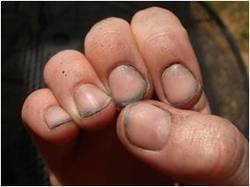 So then, what is dirt? Dirt is what gets on our clothes or under our fingernails. It is soil that is out of place in our world – whether tracked inside by shoes or on our clothes. Dirt is also soil that has lost the characteristics that give it the ability to support life – it is “dead.” Soil performs many critical functions in almost any ecosystem (whether a farm, forest, prairie, marsh or suburban watershed). There are seven general roles that soils play: 1 Soils serve as media for growth of all kinds of plants. 2 Soils modify the atmosphere by emitting and absorbing gases (carbon dioxide, methane, water vapor, and the like) and dust. 3 Soils provide habitat for animals that live in the soil (such as groundhogs and mice) to organisms (such as bacteria and fungi), that account for most of the living things on Earth. 4 Soils absorb, hold, release, alter, and purify most of the water in terrestrial systems. 5 Soils process recycled nutrients, including carbon, so that living things can use them over and over again. 6 Soils serve as engineering media for construction of foundations, roadbeds, dams and buildings, and preserve or destroy artifacts of human endeavors. 7 Soils act as a living filter to clean water before it moves into an aquifer. Soil Formation is influenced by 5 interrelated factors: “Each soil has had its own history. Like a river, a mountain, a forest, or any natural thing, its present condition is due to the influences of many things and events of the past.” - Charles Kellogg, The Soils That Support Us, 1956 Soil Formation – CLORPT – for short! Soils differ from one part of the world to another, even from one part of a backyard to another. They differ because of where and how they formed. Five major factors interact to create different types of soils: Climate—Temperature and moisture influence the speed of chemical reactions, which in turn help control how fast rocks weather and dead organisms decompose. Soils develop faster in warm, moist climates and slowest in cold or arid ones. Organisms—Plants root, animals burrow, and bacteria eat – these and other organisms speed up the breakdown of large soil particles into smaller ones. For instance, roots produce carbon dioxide that mixes with water and forms an acid that wears away rock. Relief or Topography (Landscape)—The shape of the land and the direction it faces make a difference in how much sunlight the soils gets and how much water it keeps. Deeper soils form at the bottom of a hill because gravity and water move soil particles down the slope. Parent material—Every soil “inherits” traits from the parent material from which it formed. For example, soils that form from limestone are rich in calcium and soils that form from materials at the bottom of lakes are high in clay. Every soil formed from parent material deposited at the Earth’s surface. The material could have been bedrock that weathered in place or smaller materials carried by flooding rivers, moving glaciers, or blowing winds. Parent material is changed through biological, chemical and environmental processes, such as weathering and erosion. Time—All of these factors work together over time. Older soils differ from younger soils because they have had longer to develop. As soil ages, it starts to look different from its parent material. That is because soil is dynamic. Its components—minerals, water, air, organic matter, and organisms—constantly change. Components are added and lost. Some move from place to place within the soil, while some components are totally changed or transformed. “Essentially, all life depends upon the soil ... There can be no life without soil and no soil without life; they have evolved together.” - Charles E. Kellogg, USDA Yearbook of Agriculture, 1938 Pedology, the study of soil, is a unique discipline. Well-trained soil scientists are in high demand for a wide array of professional positions with public agencies or private firms. Here are some specific examples of positions held by soil science graduates:
Where do you find soil career opportunities?
Soil Science Society of America - http://www.soils.org/ U.S. Consortium of Soil Science Associations - http://soilsassociation.org Office of Personnel Management - http://www.usajobs.gov
4 Comments
11/27/2017 08:22:32 am
Very good knowledge share you. Every point of soil study you discuss. I am study this article and known extra knowledge
Reply
11/11/2021 08:26:28 am
Comprehensive knowledge about soil. Such a great source of information. Thanks a lot for sharing.
Reply
Leave a Reply. |
Details
Author:
|
|
|
Contact:PHONE: (513) 695 - 1337
EMAIL: [email protected] HOURS: Monday - Friday 7:30am - 4:00pm (except holidays) Connect:Warren County Soil & Water Conservation District Copyright © 2016
Warren SWCD Privacy Notice. Emails are serviced by Constant Contact. Constant Contact's Privacy Notice. |
